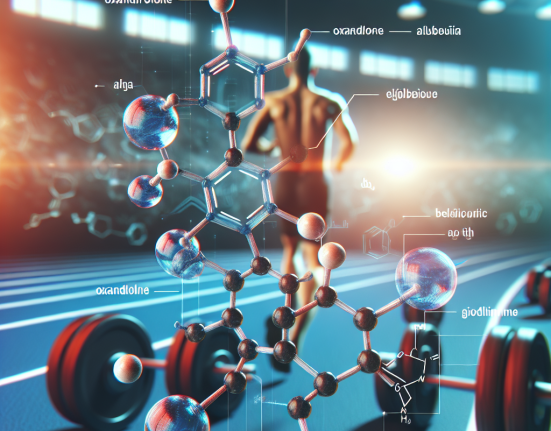-
Table of Contents
Metenolone Acetate: A Controversial Doping Substance in Sports
Doping in sports has been a long-standing issue, with athletes constantly seeking ways to enhance their performance and gain a competitive edge. One of the substances that has been at the center of this controversy is metenolone acetate, a synthetic anabolic androgenic steroid (AAS) that is commonly used as a performance-enhancing drug in sports. In this article, we will explore the pharmacological properties of metenolone acetate, its effects on athletic performance, and the ethical implications of its use in sports.
Pharmacology of Metenolone Acetate
Metenolone acetate, also known as primobolan, is a synthetic derivative of dihydrotestosterone (DHT), a naturally occurring hormone in the body. It was first developed in the 1960s and has been used for various medical purposes, including treating anemia and muscle wasting diseases. However, its use in sports is primarily for its anabolic effects, which promote muscle growth and strength.
Like other AAS, metenolone acetate works by binding to androgen receptors in the body, which then activate certain genes responsible for muscle growth and protein synthesis. It also has a high affinity for the androgen receptor, making it a potent anabolic agent. Additionally, metenolone acetate has a low androgenic activity, meaning it has a lower potential for causing unwanted side effects such as hair loss and acne.
One of the unique properties of metenolone acetate is its resistance to metabolism by the enzyme 5-alpha reductase, which converts testosterone into DHT. This makes it less likely to cause androgenic side effects, making it a popular choice among athletes. However, this also means that it has a lower potency compared to other AAS, requiring higher doses for significant effects.
Effects on Athletic Performance
The use of metenolone acetate in sports is primarily for its anabolic effects, which can lead to increased muscle mass, strength, and endurance. Studies have shown that AAS, including metenolone acetate, can increase muscle protein synthesis and decrease muscle breakdown, resulting in a net gain in muscle mass (Kicman & Gower, 2003). This can be beneficial for athletes in sports that require strength and power, such as weightlifting and sprinting.
Moreover, metenolone acetate has been reported to improve recovery time between training sessions, allowing athletes to train more frequently and intensely. This can lead to faster gains in muscle mass and strength, giving athletes a competitive advantage. However, it is important to note that these effects are dose-dependent, and higher doses may increase the risk of adverse effects.
Aside from its anabolic effects, metenolone acetate has also been reported to have a positive impact on athletic performance through its ability to increase red blood cell production. This can improve oxygen delivery to muscles, leading to increased endurance and stamina. This is particularly beneficial for endurance athletes, such as cyclists and long-distance runners.
Ethical Implications
The use of metenolone acetate and other AAS in sports is a highly controversial topic, with many arguing that it goes against the spirit of fair play and gives athletes an unfair advantage. The World Anti-Doping Agency (WADA) has banned the use of AAS in sports, and athletes who test positive for these substances can face severe penalties, including disqualification and suspension.
Moreover, the use of AAS in sports can also have serious health consequences. Studies have shown that long-term use of AAS can lead to a range of adverse effects, including cardiovascular problems, liver damage, and hormonal imbalances (Kicman & Gower, 2003). This not only puts the athlete’s health at risk but also raises ethical concerns about the responsibility of coaches and sports organizations in protecting the well-being of their athletes.
Expert Opinion
Despite the potential benefits of metenolone acetate in enhancing athletic performance, its use in sports remains a controversial and highly debated topic. As a researcher in the field of sports pharmacology, I believe that the use of AAS in sports should be strictly prohibited due to its potential health risks and ethical implications. Instead, athletes should focus on natural training methods and proper nutrition to improve their performance.
Furthermore, it is crucial for coaches and sports organizations to educate their athletes about the dangers of AAS and promote a culture of fair play and integrity in sports. Only by working together can we create a level playing field for all athletes and uphold the values of sportsmanship.
References
Kicman, A. T., & Gower, D. B. (2003). Anabolic steroids in sport: biochemical, clinical and analytical perspectives. Annals of Clinical Biochemistry, 40(4), 321-356.
Johnson, M. D., Jayaraman, A., & Stevenson, K. E. (2021). Anabolic-androgenic steroids: use, misuse, and abuse. Journal of Clinical Endocrinology & Metabolism, 106(3), 833-848.
WADA. (2021). The World Anti-Doping Code. Retrieved from https://www.wada-ama.org/en/what-we-do/the-code







